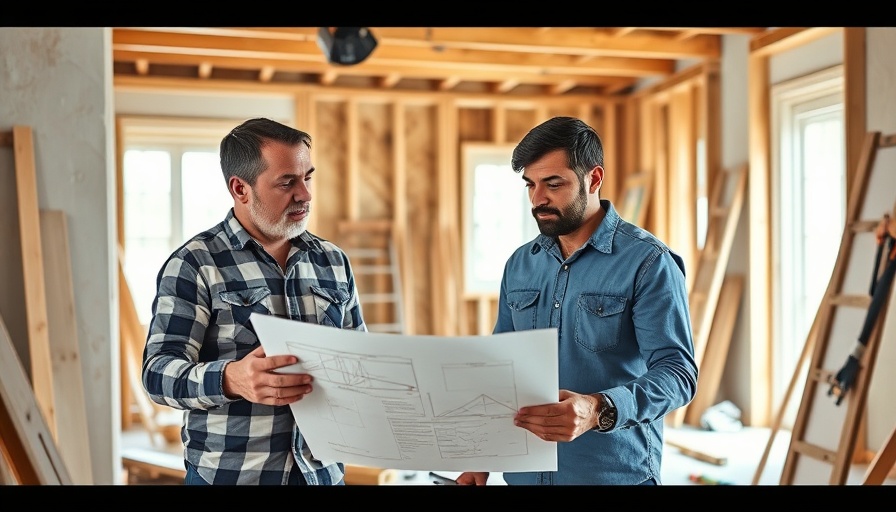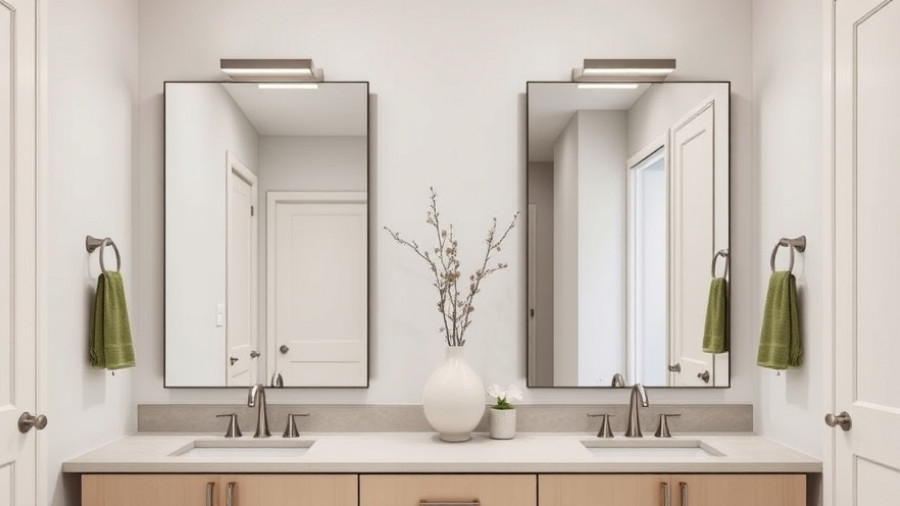
Unlocking the Beauty of Cathedral Ceilings: A DIY Dream
If you're contemplating a home renovation, you might want to think about elevating your living space with a stunning cathedral ceiling. This architectural feature not only enhances the aesthetic of your home but also gives an illusion of increased space and openness. Recently, a team on the popular show "This Old House" showcased an inspiring transformation that left both the crew and the homeowners in awe.
The Science Behind the Design
Creating a cathedral ceiling isn’t just about making a room look pretty; it involves careful planning and precise execution. A noticeable takeaway from the episode is the importance of laying out roof boards and rafters before beginning construction. Achieving that perfect look and structural integrity requires meticulous attention to detail and skilled craftsmanship. As seen in the project, the use of log rafters anchored on a sturdy tie beam forms the backbone of this design, ensuring it remains sound and visually appealing.
Reclaimed Materials: A Sustainable Choice
One of the standout features of the cathedral ceiling discussed was the faux beam made from reclaimed boards. Not only does this add a touch of rustic charm, but it also promotes sustainability by repurposing materials that might otherwise go to waste. Homeowners are encouraged to consider reclaimed materials for their own renovations, as they often tell a story and add character to a space.
Creating a Cozy Atmosphere
As the homeowners expressed their satisfaction with the completed project, it's clear that a well-executed cathedral ceiling can drastically improve a room's atmosphere. Helen's reaction, feeling as though she were in an old attic, illustrates how the right design choice can evoke feelings of warmth and charm. For those looking to create a cozy yet imposing vibe in their living areas, cathedral ceilings are worth considering.
Steps to Consider for Your Project
Before diving into your cathedral ceiling project, consider these steps:
- Assess Your Space: Ensure your existing structure can support such a renovation.
- Plan Your Design: Work with an architect or designer to execute your vision.
- Materials Matter: Source materials sustainably, perhaps opting for reclaimed wood.
- Hire Professionals: If unsure, consult with contractors who specialize in roofing and ceiling installations.
With thoughtful planning and execution, a cathedral ceiling can not only elevate the aesthetic of your home but also add significant value. Many DIY enthusiasts are implementing these ideas to create spaces that are not only beautiful but also unique to their style.
Conclusion: Embrace the Change!
Renovating your home can feel daunting, but as shown in the "This Old House" episode, the results are wholly rewarding. The beauty of a cathedral ceiling goes beyond mere looks; it creates a sense of space, warmth, and character. Ready to start your own home improvement journey? Embrace the potential of your living spaces—your dream home could be just a renovation away!
 Add Row
Add Row  Add
Add 




Write A Comment